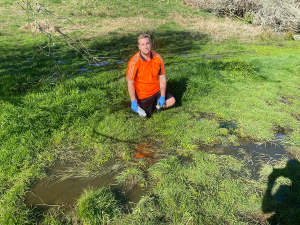Last season's dairy export earnings reached $13.4 billion, on par with the five-year average.
Speaking at DairyNZ’s annual meeting in Rotorua last week, acting chairman Barry Harris says this illustrates how well farmers have responded to the low milk prices of previous seasons.
“I see the decade ahead of us to be transformational for our sector. Never before have we had a stronger mandate for the dairy sector to concentrate on productivity – to produce more from less, and to do so sustainably,” says Harris.
“We support initiatives that incentivise farmers to use the best environmental practices. While the 2010s have been about dairy positioning itself for the changes ahead, I see the 2020s as heavily focused on making those changes.
“New Zealand’s environmental reputation, the reputation that gives us an advantage on the global market, relies on us upholding and improving our sustainability.”
The dairy industry’s 2016-17 season’s economic success and the need to produce more milk sustainably were key themes at the meeting.
DairyNZ investment for the 2017-18 season includes $18.5m going into R&D, $16.1m on biosecurity and product integrity and $13.7m on farm profit.
“These are our key investment areas, making up 65% in every levy dollar. This will enable the continuation of key research into dairy cow fertility and forage improvement, and greater emphasis on cost control and high-performing feed management systems,” says Harris.
DairyNZ chief executive Tim Mackle said in 2016-17 national cow numbers fell to 4.86m from 5m previously, with the average herd size dropping five cows to 414. Yet production per cow set a new record – increasing by 9kg per cow (381kgMS/cow).
Bay of Plenty’s 901 herds accounted for 6.6% of NZ’s milk production in 2016-17, producing 118.2m kgMS.
This production was down 4.4% due to slightly lower stocking rates and herd numbers last season, combined with difficult spring and autumn conditions.
“Rotorua will provide an interesting case study in years to come, because historically there has been a significant variation in profitability. I expect as we become better at increasing productivity onfarm these profitability variations will level out.”
New director
Dairy Holdings Ltd chief executive Colin Glass has been appointed a farmer-director of DairyNZ.
Sitting director Jim van der Poel was re-elected.
Acting chairman Barry Harris and Peter Schuyt were also reappointed as board-appointed directors.


















